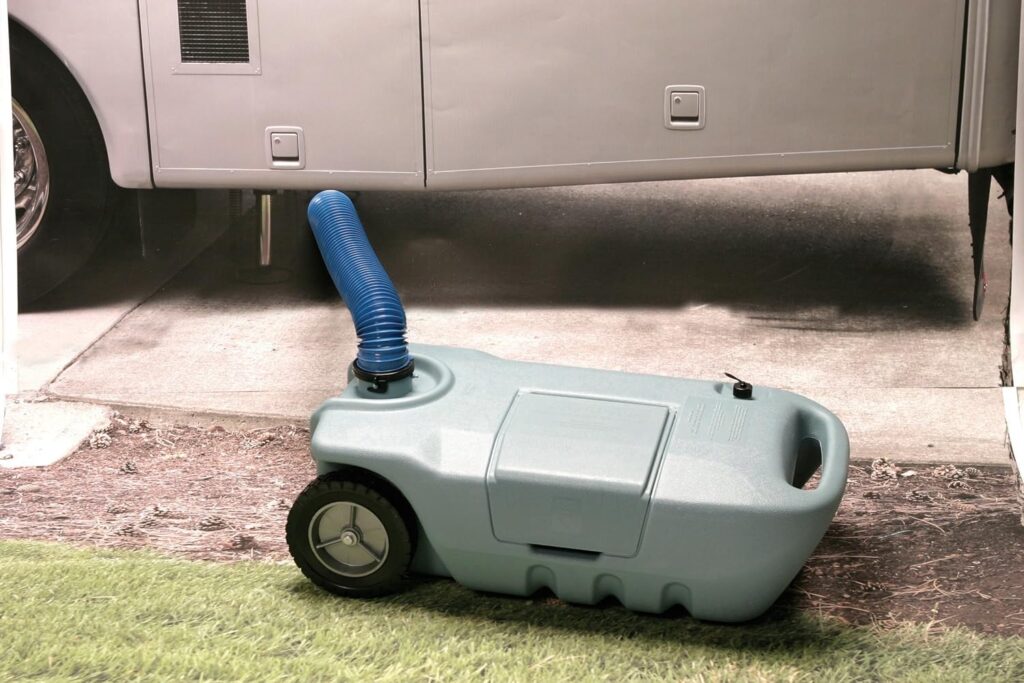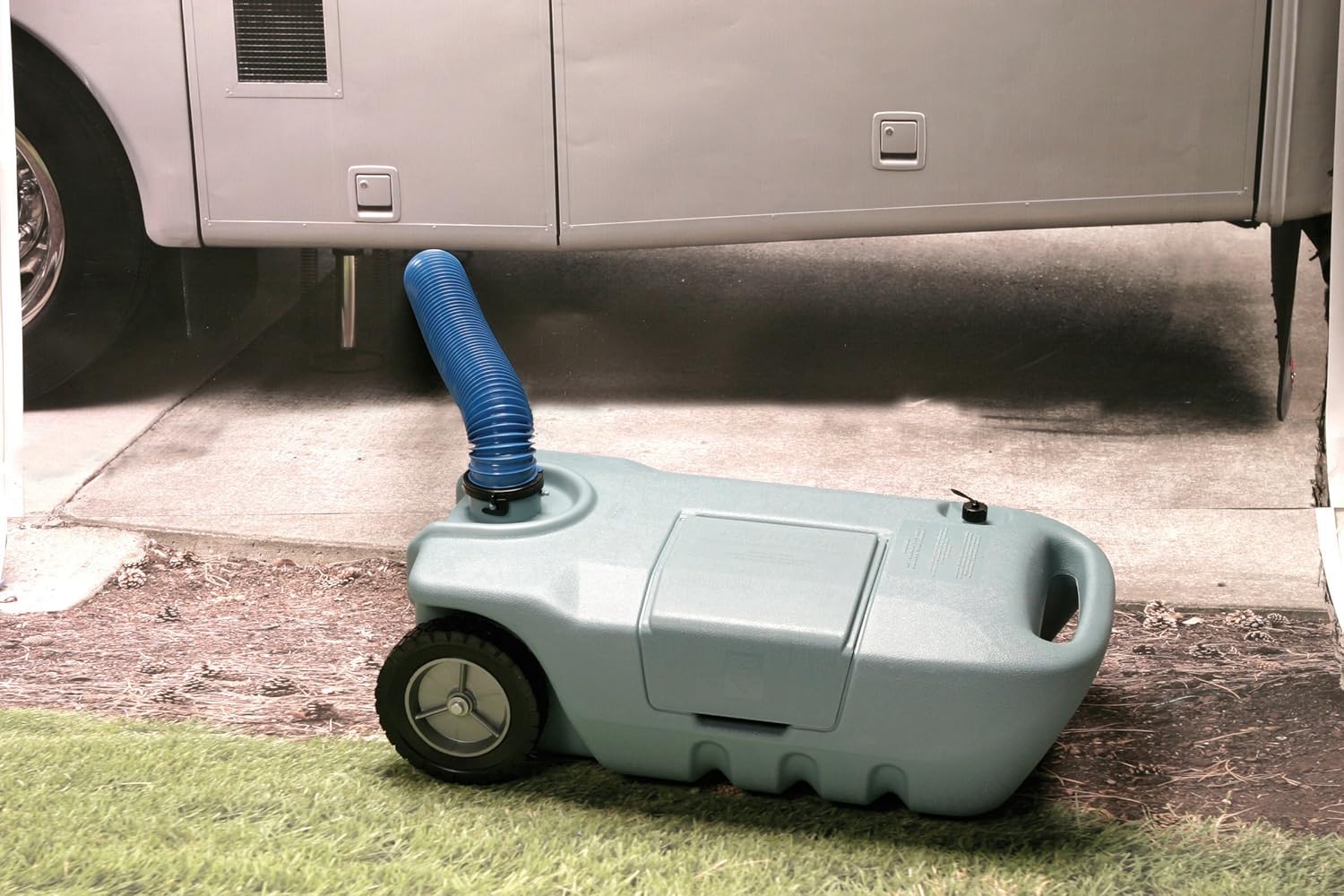
The Indispensable Guide to Portable Dump Tanks for Campers: Choosing, Using, and Maintaining
For those who cherish the freedom of the open road and the tranquility of the wilderness, the recreational vehicle (RV) lifestyle offers an unparalleled experience. However, this idyllic vision often comes with a less glamorous reality: managing waste. One of the most crucial pieces of equipment for any camper is a reliable portable dump tank for camper. This guide delves into everything you need to know about these essential tools, from selecting the right one to ensuring its longevity.
A portable dump tank for camper, also known as a tote tank or waste tank, is a vital component for managing the black and gray water from your RV when you don’t have a direct sewer hookup. It allows campers to transport wastewater from their RV’s holding tanks to a designated dump station, maintaining cleanliness and complying with environmental regulations. Without a portable dump tank for camper, you’re essentially confined to campsites with full hookups, drastically limiting your travel options.
Understanding the Necessity of a Portable Dump Tank
Before diving into the specifics, it’s important to understand why a portable dump tank for camper is so indispensable. RVs have two main types of wastewater: black water (from the toilet) and gray water (from sinks and showers). Both need proper disposal. While many campsites offer sewer hookups, these aren’t always available, especially in remote or off-grid locations. A portable dump tank for camper solves this problem, allowing you to extend your camping trips and explore a wider range of destinations. It’s about freedom and responsibility, ensuring you enjoy your outdoor adventures while respecting the environment.
Choosing the Right Portable Dump Tank for Your Camper
Selecting the right portable dump tank for camper involves several considerations. The primary factor is tank capacity. Tanks range in size, typically from 15 to 45 gallons or more. The appropriate size depends on the size of your RV’s holding tanks, your water usage habits, and how often you want to visit a dump station. A larger tank means fewer trips to empty, but it also means a heavier tank to maneuver when full.
- Capacity: Consider the size of your RV’s holding tanks and your typical water usage. Overestimating is better than underestimating.
- Material: Most tanks are made from durable polyethylene, which is resistant to leaks and cracks. Ensure the material is UV-resistant to prevent degradation from sunlight.
- Wheels and Handle: Look for a tank with sturdy wheels and a comfortable handle for easy transport, especially when the tank is full. Consider a tank with a tow-hitch for easier transportation.
- Valve and Hose: The valve should be easy to operate and seal tightly to prevent leaks. The included hose should be flexible, durable, and long enough to reach the dump station inlet.
- Ease of Cleaning: Choose a tank with smooth interior surfaces and a built-in flushing system to simplify cleaning.
Beyond these basics, look for features that enhance convenience. Some tanks include built-in hose storage, level indicators, and integrated accessories like a sewer hose. Reading reviews from other campers can provide invaluable insights into the real-world performance of different models.
Using Your Portable Dump Tank Safely and Effectively
Proper use of your portable dump tank for camper is crucial for both safety and environmental responsibility. Here’s a step-by-step guide:
- Preparation: Ensure you have all the necessary equipment, including the portable dump tank, sewer hose, gloves, and possibly a clear elbow fitting to monitor the flow.
- Connecting the Hose: Attach one end of the sewer hose to your RV’s waste outlet (black or gray water). Secure the hose tightly to prevent leaks.
- Draining Your Tanks: Open the valve on your RV’s holding tank and allow the waste to flow into the portable dump tank. Monitor the process to prevent overfilling.
- Disconnecting and Transporting: Once the tank is full or your holding tank is empty, close the valve on the RV and detach the hose. Cap both ends of the hose securely. Carefully transport the portable dump tank for camper to the dump station.
- Disposing of Waste: At the dump station, connect the hose to the inlet and open the valve on the portable dump tank to empty the contents. Rinse the tank thoroughly before storing.
- Cleaning and Storage: Rinse the tank and hose with fresh water. Store them in a clean, dry place until your next use.
Always wear gloves and eye protection during this process. Be mindful of the environment and avoid spills. Check local regulations for proper waste disposal procedures, as these can vary.
Maintaining Your Portable Dump Tank for Camper
Regular maintenance extends the life of your portable dump tank for camper and prevents unpleasant odors and leaks. Here are some essential maintenance tips:
- Regular Cleaning: Rinse the tank thoroughly after each use. Use a tank cleaning solution or a mixture of water and RV toilet chemicals to remove any lingering waste.
- Valve Inspection: Inspect the valve for leaks and ensure it seals properly. Replace the valve if necessary.
- Hose Maintenance: Regularly inspect the sewer hose for cracks or damage. Replace the hose if it shows signs of wear. Clean the hose after each use to prevent odors.
- Wheel and Handle Care: Lubricate the wheels and handle as needed to ensure smooth operation.
- Storage: Store the tank in a cool, dry place when not in use. Protect it from extreme temperatures and direct sunlight.
By following these maintenance tips, you can ensure your portable dump tank for camper remains a reliable companion on your RV adventures for years to come.
Common Issues and Troubleshooting
Even with proper care, you might encounter some issues with your portable dump tank for camper. Here’s how to address common problems:
- Leaks: Check the valve, hose connections, and tank for cracks. Tighten connections or replace damaged components.
- Odors: Ensure the tank is properly cleaned and rinsed. Use RV toilet chemicals to control odors.
- Clogged Hose: If the hose becomes clogged, use a hose flushing tool or a garden hose to dislodge the blockage.
- Difficulties Emptying: Ensure the tank is positioned correctly for proper drainage. Check for any obstructions in the hose.
If you encounter persistent problems, consult the manufacturer’s instructions or seek professional assistance. Preventative maintenance is key to avoiding many of these issues in the first place.
Beyond the Basics: Advanced Tips and Considerations
For those looking to optimize their RV experience, consider these advanced tips:
- Tank Additives: Use RV toilet chemicals or tank additives to break down waste, control odors, and lubricate the tank’s components.
- Level Indicators: Invest in a tank level indicator to monitor the fill level of your holding tanks and portable dump tank.
- Clear Elbow Fitting: A clear elbow fitting allows you to visually monitor the waste flow and ensure the tank is emptying properly.
- Dump Station Etiquette: Always follow proper dump station etiquette. Don’t leave your hose unattended and clean up any spills.
- Environmental Responsibility: Be mindful of your impact on the environment and follow all local regulations regarding waste disposal.
These advanced tips can enhance your RV experience and help you become a more responsible and experienced camper.
The Future of Portable Dump Tanks
As technology advances, the design and features of portable dump tanks for campers continue to evolve. We can expect to see innovations in tank materials, wheel systems, and waste management technology. Manufacturers are increasingly focused on creating more durable, user-friendly, and environmentally sustainable products.
The core function of a portable dump tank for camper will remain the same: to provide a safe and convenient way to manage RV waste. However, future models will likely offer enhanced features to improve the camping experience and further reduce the environmental impact of RV travel. The industry is moving towards more integrated systems, making waste management even easier for campers of all skill levels.
Conclusion: Embracing Freedom with a Portable Dump Tank
The portable dump tank for camper is more than just a piece of equipment; it’s an investment in your freedom and enjoyment of the RV lifestyle. By choosing the right tank, using it properly, and maintaining it diligently, you can ensure that your camping adventures are both enjoyable and responsible. With the right portable dump tank for camper, you can explore the open road, discover new destinations, and create lasting memories, all while respecting the environment.
This comprehensive guide provides you with the knowledge and tools you need to make informed decisions, ensuring that your RV adventures are as smooth and enjoyable as possible. So, pack your bags, hit the road, and embrace the freedom of the open wilderness, equipped with a reliable portable dump tank for camper.
[See also: Choosing the Right RV: A Comprehensive Guide]
[See also: RV Water Systems: A Beginner’s Guide]
[See also: Best Practices for RV Waste Disposal]


